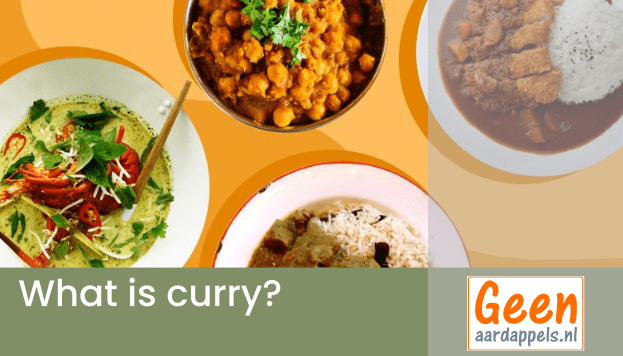Cart
You have no items in your shopping cart

The different forms of curry
The different forms of curry around the world tell the story of spices, colonization, globalization and immigration.
How do you actually describe curry?
Flavorful, aromatic, rich, creamy and perhaps spicy come to mind. But while those familiar with curry may have vague ideas about what it is, curry is such a broad category encompassing such a diverse range of dishes that it's hard to explain what is considered curry and what isn't.
However, the term curry is not Indian.
The word "curry" was used as an umbrella term by British settlers in India as a simple way to refer to spicy Indian dishes - dishes that came from different regions of a country with numerous cultures and 19,500 languages, dishes in which different types of ingredients were used. used and were not necessarily related to each other. Some etymologists suggest that the word 'curry' is derived from the word 'kari', which means pepper or spicy sauce in Tamil, a South Indian language.
So you can see why curry is hard to explain: it's more of an idea than a tangible thing. And curry powder adds another layer of complexity.
The British wanted to capture and take home the nuanced, spicy flavors of the dishes they ate in India. That's actually why they developed curry powder - which is also not used in traditional Indian cooking. Curry powder is a blend of spices such as turmeric, cumin, ginger, coriander and chili, becoming a portable way to try and replicate flavors of Indian dishes. When a dish is "curry", as in "curried chicken salad" or "curried cauliflower", it essentially just means using curry powder or other Indian spices to flavor it.
Today, there are versions of curry around the world, influenced by cultural and political factors, as well as immigration and tourism. And that largely determines what is called curry and what is not. For example, South Asian dals, or lentil stews, are considered curry, while Ethiopian misir wat, creamy Ethiopian spiced red lentils, are not considered curry.
That's because the name "curry" was imposed by the British and then became popular through tourism. For example, spicy Thai dishes known to the world as green curry, red curry and massaman curry are so named because the tourism economy the country relies on benefits from labeling dishes in a way that foreign tourists understand.
Indians and other South Asians don't use the word "curry" because it's largely a catch-all term for so many dishes. Examples include chana masala, chicken tikka masala (which has an interesting origin story), lamb korma, and xitti kodi (Goan fish curry). You'll find versions of these dishes with different cultural twists throughout South and Southeast Asia, from India to Malaysia and Myanmar. The curry familiar to most people in the West was popularized in the 1850s and early 1900s by Bangaldeshi members of the British merchant fleet who settled elsewhere and opened Indian restaurants, often in port towns.
Depending on the region of origin and the chef's preference, South Asian curries can be coconut, cream, yogurt, water/stock, tomato or nuts - or a combination of them. Most start by sautéing aromatics such as onions and garlic. They can be spicy or mild. They can have the texture of a thick mash, such as saag paneer, or gravy-like, such as korma, and they are eaten with rice and flatbreads such as naan, chapati, and paratha.
Today, curry is synonymous with South Asian food, and while many have embraced the term as a simple way to describe spicy dishes, others find it to erase cultural nuances and find it offensive.
Comments
Be the first to comment...